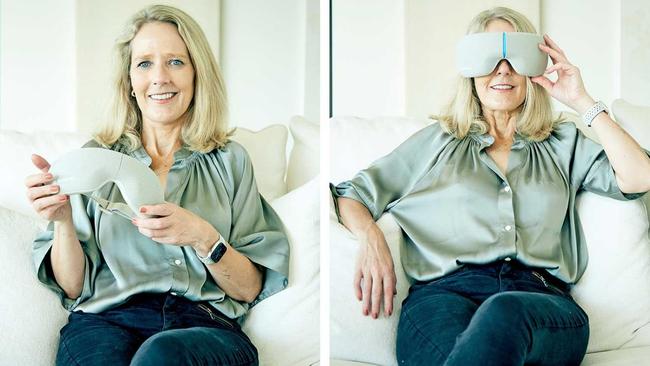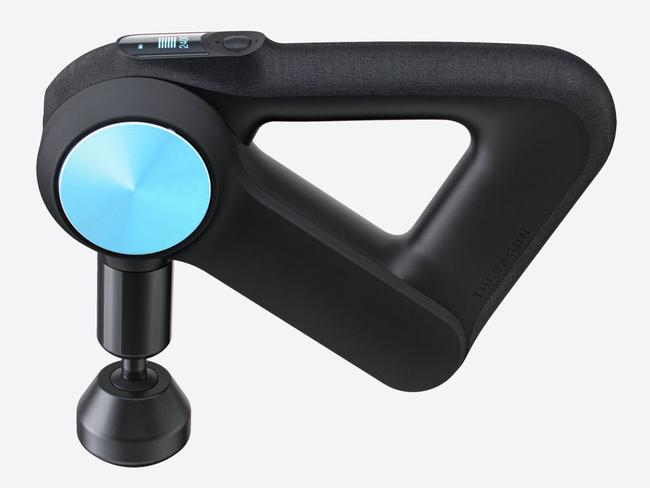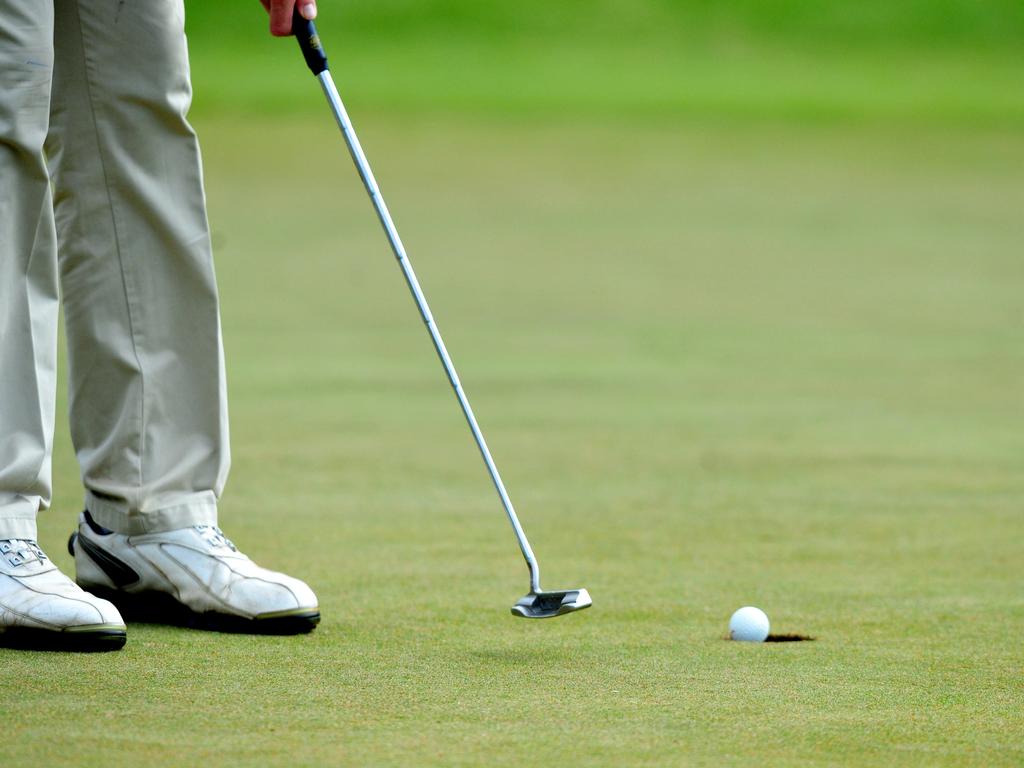Better sleep, less stress – is this the new must-have gadget?
Athletes are already using hi-tech $300 massage goggles, so it is time to test whether they really do improve your wellbeing.

As my temples are gently massaged and warmed, pulsating vibrations circulate around my eye sockets and forehead. The new hi-tech eyewear I have on, I’m told, responds to my heart rate, to alleviate pent-up stress and soothe my mind. By switching between different settings – relax, sleep, focus – and synching them with soundtracks on an accompanying app, the goggles have the potential to reduce pain and headaches, and enhance mental focus and sleep.
The Smart Goggles – which are priced at $300 and went on sale on Tuesday – are made by Therabody, a Los Angeles-based company with a list of celebrity investors, including Jay-Z and Daniel Craig. Its reputation was built on a range of deep-tissue massage guns, before it diversified into recovery devices – such as muscle stimulators and pneumatic compression boots – for affluent sporty types and professionals (Cristiano Ronaldo is an official Therabody athlete).
Dr Jason Wersland, the chiropractor who founded Therabody, envisages that the company’s latest invention will be used on flights to help people to relax, and before board meetings and workouts. “There are 15-minute programs, but the idea is to use the goggles even just for three to five minutes to help to prepare the mind for whatever lies ahead,” he says when we meet at a hotel in Shoreditch, east London.

There is a heart-rate sensor in the goggles that sits next to your cheek when you wear them, transmitting signals to generate a vibration that feels like a heartbeat, and which in the chill-out modes is set just below your heart rate. As you relax, your heart rate drops further and the vibrations get slower. Dr Wersland says the effects are similar to the deep relaxation effect of closing your eyes or meditating, but with a bit of massage thrown in. Switch to the focus mode and the tempo picks up to make you more alert for your next meeting.
After speaking to me, Dr Wersland is heading off to discuss supplying the goggles to Manchester City Football Club, which has been trialling the devices. Some players have apparently enthused about the gadget’s use for focusing the mind ahead of matches.
The goggles are one more thing to add to kit bags already bulging with heart-rate monitors, GPS trackers, foam rollers and massage guns. At best, many gadgets offer the kind of marginal gains that matter only to elite athletes, and scientists remain sceptical about whether some of them have any effect. It’s open to question whether jumping into an ice bath, for example, helps to heal muscles and boost recovery, and the short-lived trend for wearing sticky strips across the nose to increase oxygen intake was proven ineffective. And the jury is out as to the benefits of compression garments – “evidence for their efficacy is varied”, according to a review of 183 studies this year.
If your Peloton bike is being used as a clothes horse you may be reluctant to spend $300 on fancy goggles, even if they do promise to help you to smash your next boardroom presentation after a red-eye flight. Would a scientist’s honest appraisal help?
Costas Karageorghis, a professor of sport and exercise psychology at Brunel University who specialises in the study of sound and its impact on health and athletic performance, is at least not too dismissive when I ask him whether the goggles may be helpful for some people. He says that they are the latest addition to a booming market of products that use audio techniques and sound frequencies to improve mental and physical health.
In the Global Wellness Institute’s annual prediction of trends, sound wellness, or “bioacoustics”, featured prominently, with an increasing number of platforms offering personalised sleep or calm playlists based on biometrics such as heart rate, blood pressure, temperature and respiration patterns.
Devices embedded with vibroacoustic technology – a form of sound therapy that transmits low-frequency waves through the body; a sort of musical massage – are making their mark. Already you can lie on a healBed, Vibrobed recliner or Sound Oasis mat – all of which use this technology – and next up from Therabody is a “sound chair” that works in a similar way.
Of course, the question is whether any of them work. Some small studies have shown vibroacoustic sound-therapy devices to be helpful for pain management, but an investigation published in BMJ Open this year concluded that research in the area is “too sparse” to confirm whether it helps people to achieve a restorative state or to focus their minds.
Mr Karageorghis, who recently published a review of 47 studies on sound therapy in the International Review of Sport and Exercise Psychology, says that evidence is stronger for the effects of music and the use of different sound frequencies.
“We know that sound frequencies exist in every living state and affect deep parts of the brain, influencing fatigue and mood,” he says. “Low-frequency delta sound waves are associated with stages of deep sleep or meditation, whereas high beta waves are linked to higher anxiety.”
Alpha waves are normally more prominent when in a relaxed mental state, he says, but sound therapy can help to manipulate your state of mind. “With a sprinter or footballer, for example, down-regulating but not eliminating beta waves to reach a state more towards alpha would be linked to peak performance, because they want to be calm but primed for action. But if you are doing something that requires precision, such as archery, too many heightened beta waves could be detrimental.”
As someone who needs no help switching off after work, I am doubtful that the goggles would be much use to me. But their gentle vibrating whirr is strangely intoxicating – it feels like having an Indian head massage endlessly available. I do get mild headaches, and whether or not it’s a placebo effect, wearing the goggles seems to cut short the throbbing.
“What happens to the muscles from the shoulders up when we are stressed can affect the mind and body,” Dr Wersland says. “We tend to overlook how much tension is stored in our facial and jaw muscles, yet releasing this tightness can have a powerful effect on how we feel.” Even if that’s all they do, they may be worthwhile.
– The Times





To join the conversation, please log in. Don't have an account? Register
Join the conversation, you are commenting as Logout